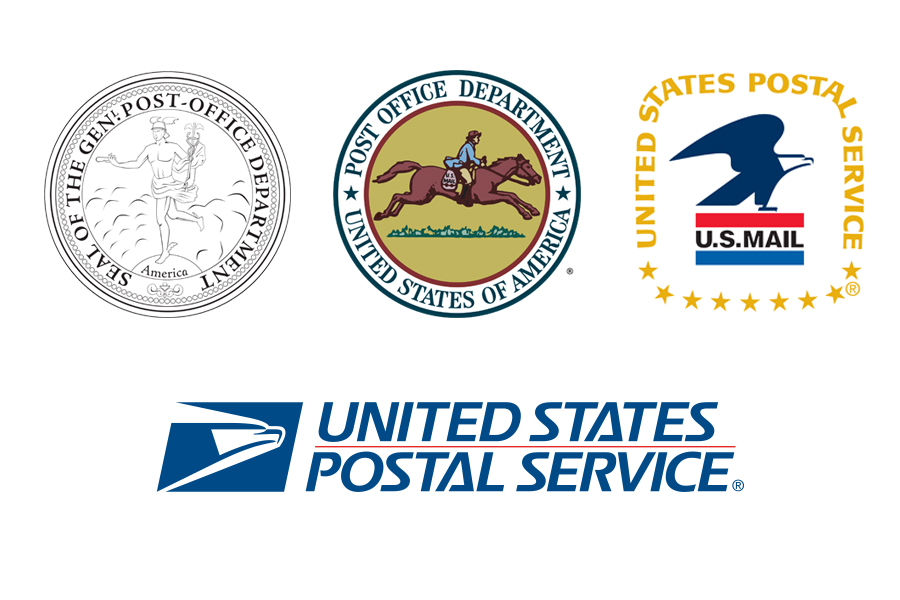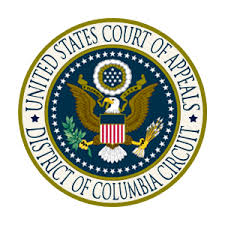Mailers have been down by the institutions that are supposed to protect them from the abuse of power by the United States Postal Service. The two most important groups that should protect mailers—the Board of Governors and the Postal Regulatory Commission—are disregarding and dismissing the needs of businesses and organizations that rely on USPS to achieve their missions.
These businesses and organizations provide most of the funding for the market dominant, mail side of the USPS, over which the agency has a strong legal monopoly. Even though the USPS has proposed to rely much more on the competitive package side that has no monopoly, the agency projects more revenue from the mail for at least four more years.
The Board of Governors
The Board of Governors has ignored mailers by not including us in the process of developing the new ten-year plan, and not listening to and taking into account the concerns we have raised about the plan’s impact on us, the nation, and the USPS. The BoG is supposed to represent and advocate for the interests of the citizens of the US, both those who pay to send mail, and those who receive mail at no cost. It is not a private board of directors intended to back and cheerlead for its chosen CEO.
We can surmise that this BoG is different from previous iterations because its six longest-serving members were appointed by one President, something that never happened before. These six appointees chose a Postmaster General who was closely associated with that President as a major supporter, donor, and fundraiser, something that also hadn’t happened before, at least in modern times.
These seven gentlemen, who had no previous experience as a major mailer or in the USPS, then received briefings from career postal executives about previous attempts to issue a new ten-year plan. They were told an oversimplified, biased version of what the “mailing industry” stands for, with a strong recommendation not to involve it in the process. The BoG, of course, followed that advice religiously.
About 45 days ago, three new Governors were sworn in, bringing the BoG to a full slate of nine appointees plus the PMG and DPMG (a career USPS HR employee). A question on the minds of mailers is whether the addition of three new Governors, not appointed by the PMG’s President, will bring any semblance of public oversight back to the body.
Will the new Governors listen to the needs of mailers and the general public? Will they question any aspects of the ten-year plan that was rapidly launched and moved forward as the new Governors went through the nomination, confirmation, and swearing-in processes?
The two most immediate and critical issues on the table are massive rate increases and diminution of service standards for First Class Mail, both scheduled for around the end of August. Before making any strategically significant attempts to repair service and to improve negative productivity, the ten-year plan is taking the easy monopolist way out by gouging customers with excessive pricing and service reduction. That is the kind of textbook abuse of monopoly power that the Governors are supposed to prevent.
We could begin to see an answer to our questions on Friday, August 6, when the Board of Governors meets in public session for the first time since before the pandemic restrictions, and for the first time with the three new Governors.
The Postal Regulatory Commission
Rates
The PRC also has let down mailers by not protecting us from abuse of monopoly power by the USPS. We said in our comments to the postal regulator that this year’s largest-ever unnecessary rate increase is “the regrettable, but predictable, culmination of the Postal Service’s decade-plus campaign to deregulate the sale of its market-dominant products, and the Commission’s acquiescence to that campaign.”
The PRC was tasked by Congress to protect mailers from abuse of the monopoly it gave the USPS. In the section of the 2006 law titled Modern Rate Regulation, Congress laid out 9 objectives, 14 factors, and 5 requirements. In its ten-year review (not the same as the USPS ten-year plan), the regulator chose to give prominence to one objective and to completely turn on its head one very important requirement.
The PRC based its new surcharges over inflation on the objective: “To assure adequate revenues, including retained earnings, to maintain financial stability.” After years of relentless pressure from USPS leadership to give the agency access to more mailers’ money, the regulator gave in and overturned the main tool Congress created to protect mailers from monopoly abuse, the requirement: “The system for regulating rates and classes for market-dominant products shall include an annual limitation on the percentage changes in rates to be set by the Postal Regulatory Commission that will be equal to the change in the Consumer Price Index for All Urban Consumers unadjusted for seasonal variation over the most recent available 12-month period preceding the date the Postal Service files notice of its intention to increase rates.”
We believe the PRC exceeded its authority in rewriting a Congressional requirement, and that it was arbitrary and capricious in doing so. That is the subject of our lawsuit in the U.S. Court of Appeals.
Among the other objectives and factors that the PRC gave short shrift to, or completely ignored:
- To maximize incentives to reduce costs and increase efficiency.
- To create predictability and stability in rates.
- To establish and maintain a just and reasonable schedule for rates and classifications.
- The educational, cultural, scientific, and informational value to the recipient of mail matter.
- The need for the Postal Service to increase its efficiency and reduce its costs, including infrastructure costs, to help maintain high quality, affordable postal services.
Service
When it comes to rate regulation, the PRC sees itself as very powerful, enough to rewrite requirements that Congress voted into law. But with service regulation, the PRC has been a paper tiger since its mandate was expanded in the 2006 law that changed the agency from the Postal Rate Commission to the Postal Regulatory Commission.
The USPS has repeatedly missed its own service standards for many years. Every year the PRC writes an Annual Compliance Determination that points how many postal products missed their service goals for the previous year. But the regulator apparently cannot do anything to force the USPS to get service back to standards. The main thing it does is demand more reports.
The PRC mission stated on its website seems to limit the agency to transparency and accountability, rather than regulating results: “The Postal Regulatory Commission is an independent Federal agency that provides transparency and accountability of the U. S. Postal Service’s operations.”
Regulate shares a root with the word regular. For some reason, the PRC has been unable to impose any control over the regular accomplishment of mail delivery standards. It does not regulate service.
The PRC recently issued an advisory opinion about the Postal Service plan to slow down almost 40 percent of First-Class Mail to more easily and regularly meet slower service standards. Even though the regulator acknowledged that the plan was not well-researched, would not yield significant, if any, cost savings, would diminish the quality of the USPS brand, and was widely opposed by both senders and receivers of mail, it did not strongly urge USPS to abandon it. The regulator cataloged all of the problems with the slowdown plan, questioned its wisdom, and recommended better ways to implement it.
The strongest regulatory opposition came in a separate opinion of one Commissioner, Ashley Poling, who said in part:
Although I am cognizant and respectful of the delineation between the
Commission’s role as the regulator and the Postal Service’s role as the operator, the
last 20 years of history have shown that if Congress values maintaining high-quality
service and continues to see the Postal Service as the vital public service it was
intended to be, some revisions to the Advisory Opinion process are desperately
needed. It should concern every American that despite the significant gaps found by
the Commission in this proposal, the Postal Service still has the power and authority to
move forward without addressing a single one. More effective guardrails need to be
built into the process to protect the American people from service reductions that will
substantially impact mail service in our country for years to come—especially when the
work has not been done to prove the Postal Service’s case, as in the instant proposal.
Congress alone has the power to fix this imbalance in the current law.
Although the question above is one for Congress to consider, in the meantime,
the Commission should be using its existing responsibility to provide an Advisory
Opinion to the greatest extent possible. In my opinion, that responsibility includes
providing reasonable, actionable alternatives or advice to improve the plan and mitigate harms to American citizens and businesses, if such guidance is warranted. I
acknowledge that producing an opinion in a timely fashion is essential to making it as
useful as possible for policymakers. But I am not convinced that this adherence to 90
days in this proceeding has struck the proper balance between thoroughness and
timeliness.
CONCLUSION
For the reasons outlined in these separate views, I cannot support the Postal
Service’s proposal to move forward at this time. It is important to note that I believe the
Commission’s Advisory Opinion, and our technical staff at the Commission, did an
exceptional job in identifying the gaps in the Postal Service’s proposal—it just did not go
far enough for me in terms of the recommendations that are ultimately provided. In
addition to the many gaps identified throughout the proposal, it also gravely concerns
me that the Postal Service did not spend the time or resources necessary to thoroughly
consult or incorporate the views of its most important customer—the American people.
The USPS Inspector General Tammy Whitcomb also issued strong criticism of the USPS plan to slow First-Class Mail in a Senate Appropriations hearing on July 13.
All of this brings us back to the Board of Governors. With the PRC, OIG, major mailers, and much of the public saying that the mail slowdown is a big mistake, the BoG is the last firewall remaining to stop it. If the BoG does not at least delay the September mail slowdown, we will know that public oversight of USPS continues to be severely lacking.
The open BoG session on August 6 could reveal the beginning of a return to independent oversight, or another disappointment.
U.S. Court of Appeals
With regard to rates, both the regulator and the Board of Governors have let down mailers, so we were forced to turn to the federal court. First, a little history:
The Alliance of Nonprofit Mailers had its genesis in 1978 when the Postal Service proposed to offer presort discounts for Third-Class Mail (the predecessor to Standard Mail). The discounts were initially proposed, however, only for regular (commercial) Third-Class Mail. After several nonprofit mailers objected, the Postal Rate Commission ruled that the discounts should be extended to nonprofit mail as well. The PRC recommended, however, that the Postal Service immediately implement only the commercial discounts; the nonprofit discounts would be phased in over a period of years.
An ad hoc coalition of four major nonprofit mailers—National Easter Seal Society, March of Dimes Birth Defects Foundation, American Lung Association, and St. Jude Children’s Research Hospital—joined together to fight the discriminatory treatment. The mailers argued that phasing in the nonprofit discounts, while immediately implementing the regular-rate discounts, violated 39 U.S.C. § 403(c), the ban on undue discrimination that was and still is part of the statute. Section 403(c) provides that the Postal Service, in “providing services and in establishing classifications, rates, and fees…shall not, except as specifically authorized in this title, make any undue or unreasonable discrimination among users of the mails, nor shall it grant any undue or unreasonable preferences to any such user.” The Court of Appeals agreed. In National Easter Seal Society v. USPS, 656 F.2d 754, 760-762 (D.C. Cir. 1981), the court ruled those disparities between the presort discounts offered to commercial vs. nonprofit users of Third-Class Mail violated Section 403(c) “absent some reasonable ground for differential treatment.”
The litigation convinced the four organizations that nonprofits needed permanent representation on all postal issues that affect them. The Alliance was incorporated shortly after. Its original board members were:
- American Association of Retired Persons
- American Cancer Society
- American Lung Association
- National Catholic Development Conference
- National Easter Seal Society
- National Wildlife Federation
- March of Dimes Birth Defects Foundation
- Jude Children’s Research Hospital
Fast forward to the present. The Alliance of Nonprofit Mailers is honored to be the only organization to represent the nonprofit sector on the team of petitioners and intervenors actively involved in appealing the new Postal Regulatory Commission rate rules. Together, our team of petitioners and intervenors covers the full spectrum of mailers that provide most of the funding for our United States Postal Service and sent most of the hard copy content to America’s mailboxes. The Alliance of Nonprofit Mailers has been run by a Board of Directors comprised entirely of nonprofit organizations to fight for our rights as mailers for over 40 years. ANM is completely independent.
PETITIONERS
ALLIANCE OF NONPROFIT MAILERS
ASSOCIATION FOR POSTAL COMMERCE
MPA – THE ASSOCIATION OF MAGAZINE MEDIA
AMERICAN CATALOG MAILERS ASSOCIATION
NATIONAL POSTAL POLICY COUNCIL
MAJOR MAILERS ASSOCIATION
INTERVENORS
NATIONAL NEWSPAPER ASSOCIATION
NEWS MEDIA ALLIANCE
We made a second request on July 23 for a “stay” of the new rates based on the harm that they would cause mailers. We should have a ruling on the stay request before the implementation date of August 29. The stay would be in effect until the court makes its decision on our appeal of the rates authority created by the Postal Regulatory Commission, sometime after oral arguments on September 13, 2021.
Importantly, we included testimony by seven mailers about the specific harm they would experience without a stay. Four are Board of Directors members of the Alliance of Nonprofit Mailers: American Lung Association, Consumer Reports, Disabled American Veterans, and Wounded Warrior Project.
You probably recall that we made a stay request six months ago that was denied by the court because we did not show “the type of imminent and irreparable harm necessary for a stay.” The PRC argued at the time that the harm was not a sure thing because
USPS hadn’t proposed new rates and the regulator hadn’t rubber-stamped them yet. Now, the basis for the Court’s denial of a stay no longer exists, and there is nothing speculative or ‘hypothetical’ about these rate increases: they will be the largest price increases levied on the Postal Service’s monopoly customers since the 2006 law’s passage.
When the PRC and BoG fail to protect mailers from the USPS, we must go to court. The court should decide the rates authority appeal in the months following the September 13 oral arguments, in either late 2021 or early 2022.





Leave a Reply